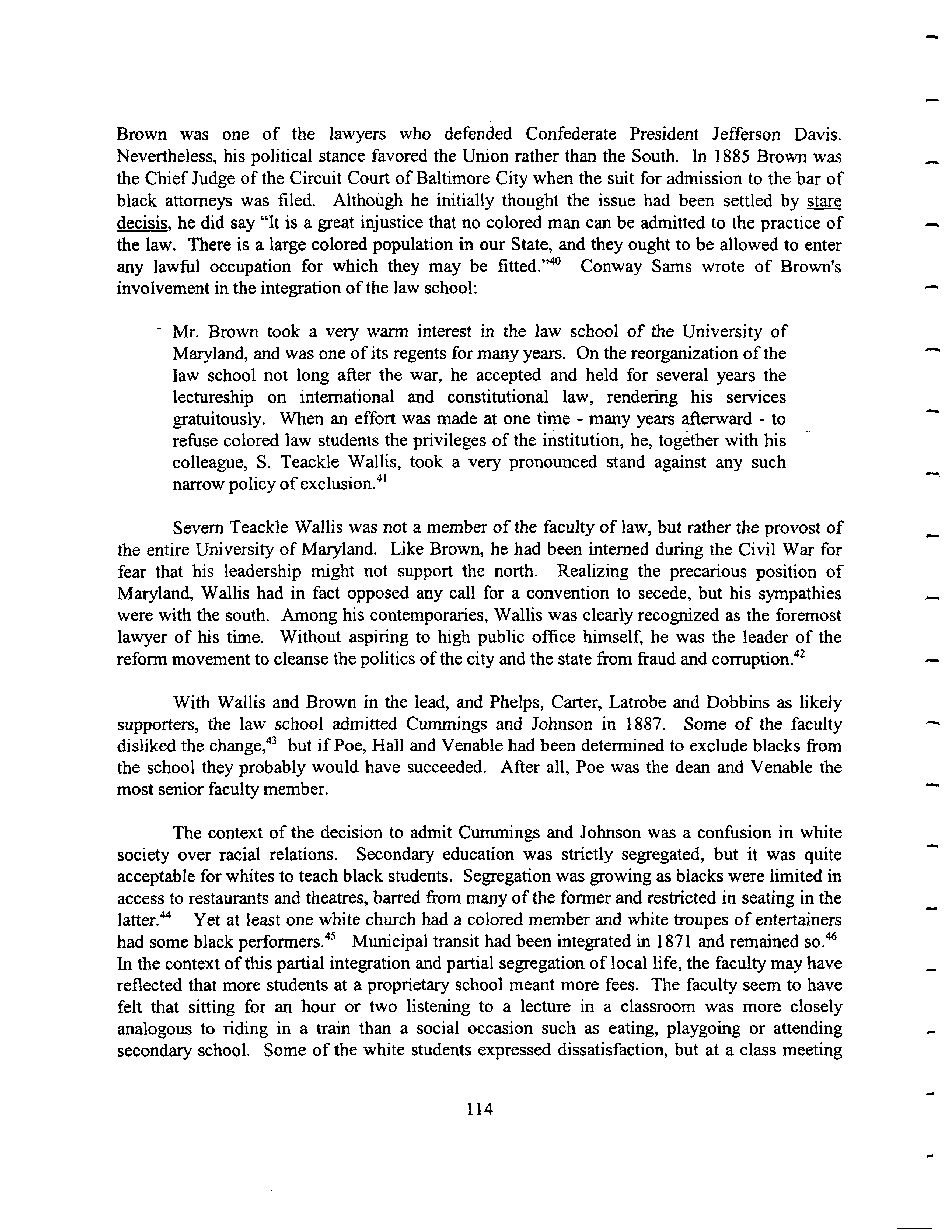|
Brown was one of the lawyers who defended Confederate President Jefferson Davis.
Nevertheless, his political stance favored the Union rather than the South. In 1885 Brown was
the Chief Judge of the Circuit Court of Baltimore City when the suit for admission to the bar of
black attorneys was filed. Although he initially thought the issue had been settled by stare
decisis, he did say "It is a great injustice that no colored man can be admitted to the practice of
the law. There is a large colored population in our State, and they ought to be allowed to enter
any lawful occupation for which they may be fitted.1"40 Conway Sams wrote of Brown's
involvement in the integration of the law school:
Mr. Brown took a very warm interest in the law school of the University of
Maryland, and was one of its regents for many years. On the reorganization of the
law school not long after the war, he accepted and held for several years the
lectureship on international and constitutional law, rendering his services
gratuitously. When an effort was made at one time - many years afterward - to
refuse colored law students the privileges of the institution, he, together with his
colleague, S. Teackle Wallis, took a very pronounced stand against any such
narrow policy of exclusion.41
Severn Teackle Wallis was not a member of the faculty of law, but rather the provost of
the entire University of Maryland. Like Brown, he had been interned during the Civil War for
fear that his leadership might not support the north. Realizing the precarious position of
Maryland, Wallis had in fact opposed any call for a convention to secede, but his sympathies
were with the south. Among his contemporaries, Wallis was clearly recognized as the foremost
lawyer of his time. Without aspiring to high public office himself, he was the leader of the
reform movement to cleanse the politics of the city and the state from fraud and corruption.42
With Wallis and Brown in the lead, and Phelps, Carter, Latrobe and Dobbins as likely
supporters, the law school admitted Cummings and Johnson in 1887. Some of the faculty
disliked the change,43 but if Poe, Hall and Venable had been determined to exclude blacks from
the school they probably would have succeeded. After all, Poe was the dean and Venable the
most senior faculty member.
The context of the decision to admit Cummings and Johnson was a confusion in white
society over racial relations. Secondary education was strictly segregated, but it was quite
acceptable for whites to teach black students. Segregation was growing as blacks were limited in
access to restaurants and theatres, barred from many of the former and restricted in seating in the
latter.44 Yet at least one white church had a colored member and white troupes of entertainers
had some black performers.45 Municipal transit had been integrated in 1871 and remained so.46
In the context of this partial integration and partial segregation of local life, the faculty may have
reflected that more students at a proprietary school meant more fees. The faculty seem to have
felt that sitting for an hour or two listening to a lecture in a classroom was more closely
analogous to riding in a train than a social occasion such as eating, playgoing or attending
secondary school. Some of the white students expressed dissatisfaction, but at a class meeting
114
�
|

